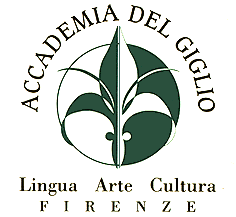 The news is just a few days old,, the real face of Dante has been reconstructed by technicians from the virtual reality laboratory of the second faculty of engineering of the University of Bologna, in Forlì. The motive for doing so is always the same, did Dante really have that famous aquiline nose and prominent chin_ Was his profile really as many painters would have us believe or are we dealing with a portrait of Dante{s personality as we know it, that we have created based on his writing rather than a true reconstruction of his actual physical aspects.
The news is just a few days old,, the real face of Dante has been reconstructed by technicians from the virtual reality laboratory of the second faculty of engineering of the University of Bologna, in Forlì. The motive for doing so is always the same, did Dante really have that famous aquiline nose and prominent chin_ Was his profile really as many painters would have us believe or are we dealing with a portrait of Dante{s personality as we know it, that we have created based on his writing rather than a true reconstruction of his actual physical aspects.
Numerous studies have already been presented that reinforced the unfounded probability that Dante really had that aspect so familiar to us and that suppose their errors to be verified by an erroneous interpretation of testimonials relative to a fresco by Giotto, now in the Bargello Museum, now there is yet another three dimensional reconstruction of the poet’s face that denies the traditional image.
Yet this is just the culmination of a long journey commenced in the 20{s by Fabio Frassetto, anthropologist at the University of Bologna, who, receiving permission to make reliefs of the poets bones conserved at Ravenna, succeeded in reconstructing his traits on the basis of the measurements taken. In reality, Frassetto could never make a good calculation of the skull, nor could he take advantage of his research on the jaw, which was lost. The conclusions at which he arrived were facial lines closer to those of the Bargello portrait, whose verisimilitude was considered dubious.
Professor Gruppioni, who was responsible for the actual reconstruction, used Frossetto’s cranial calculations, and for the mandible used the help of technicians at Forlì who had made a model without using measurements of the skull. In the end, Francesco Mallegni of the University of Pisa, master of facial reconstruction, and author of such celebrity reconstructions as Giotto and Count Ugolino, has materially contributed to the new face of Dante, which was then elaborated upon by some engineers in further computer versions, alas, with another type of nose. Dante now appears characterized with a sweeter, less angular profile, with a fairly long, twisted and very prominent nose, without the pronounced chin, thin lips and a less grave, less angry expression, with respect to the face we are used to.
We are not left with many doubts: the most important of which is whether or not the bones conserved at Ravenna are actually Dante{s. In 1509, when the sepulchre was opened, and the bones vanished, then miraculously appeared in 1865, when Romanticism was still sufficiently alive, and studies of Dante’s work were still undertaken with vigour. The second doubt regards the fact that Dante might resemble the Bargello portrait, that is to be precise, the one which could be erroneously considered accurate.
Anyway you look at it, Dante is always Dante, without his nose, and the only change one can derive from this whole story is the fact that one can no longer define a profile with an aquiline nose and prominent chin as “Dante’esque.” Definitively, Dante is again a face responsible for having changed the course of our language{s history.
This article has been translated into english by Meredith, Arianna and Joey, students from Bard College. The original article is in Italian.







Commenti recenti